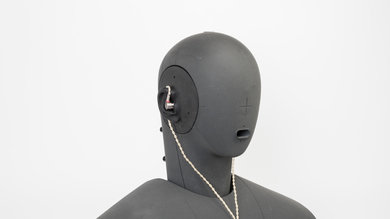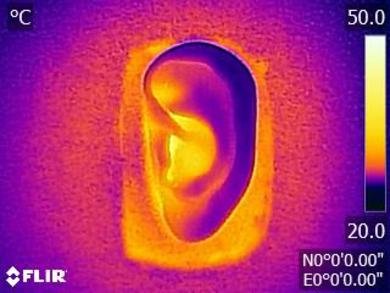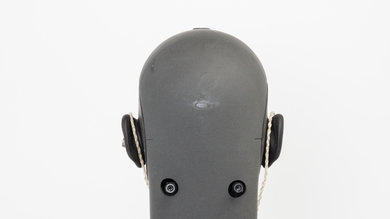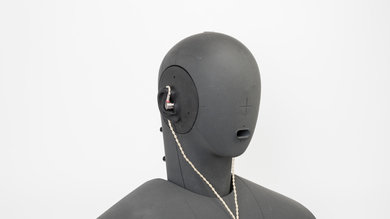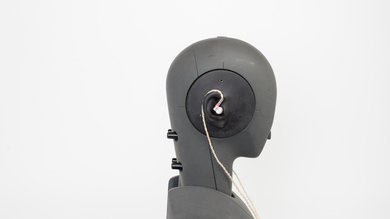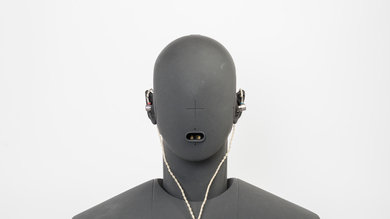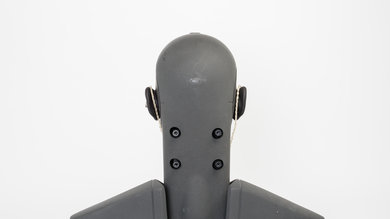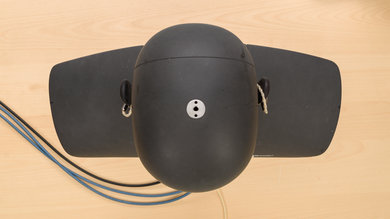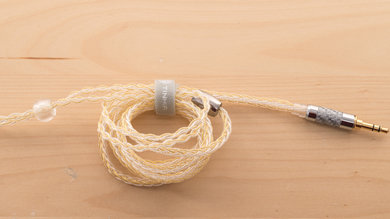The TIN Audio T3 are fair in-ears for neutral sound with a great build quality with a detachable and replaceable cable. This model resembles the previous TIN Audio T2 headphones, and they perform similarly but with noticeably more bass. They're made to be worn with an ear-hook design. They can be decently comfortable if you can find the right tip option for you and come with foam tips as well. They isolate better than the T2s, making them slightly more versatile for commuting and at the office. Unfortunately, they don’t have any control scheme as they lack an in-line remote, but their wired connection is great for watching video content without any latency issues.
Our Verdict
The TIN Audio T3 are sub-par for mixed usage. Their audio reproduction is slightly hyped in the bass range, and they're very sibilant around 10kHz. On the upside, they have great isolation performance and will be a better option for commuting and the office than the previous TIN Audio T2. Unfortunately, they aren’t the most comfortable in-ears to wear for long periods but will be fine for working out thanks to their stable ear-hooks and breathable design. They won’t be great for watching TV, as you won’t have the range to watch from your couch, and they don’t have a microphone for online gaming.
- Durable build with detachable cables.
- Great isolation performance.
- Minimal leakage.
- In-ear fit might not be for everyone.
- No in-line remote and microphone.
The TIN Audio T3 are alright for neutral sound. They have an extended, powerful, and consistent bass with a well-balanced mid-range but with an overly sharp treble on sibilants like cymbals. Also, their bass is slightly thumpy, which some may like, and a bit boomy. The mid-range is also a bit overemphasized, which brings a bit of thickness and clutter to vocals. When compared to the TIN Audio T2 model, the T3 have noticeably more bass with silicone tips.
The TIN Audio T3 are sub-par for commuting and traveling. While they have good noise isolation and block a decent amount of low-frequency noises like engine rumbles, they aren’t very comfortable and won’t be great to wear for long periods. Also, they don’t offer the freedom of wireless headphones, but if you don’t mind that or if you want to watch video content on your phone without any latency, they will be a good option for this use.
The TIN Audio T3 are acceptable for sports and fitness. These headphones are very stable due to their ear-hook cable design, and their buds are small enough to be very breathable and portable. However, they don’t have an in-line remote with control options for when you’re working out. You might also not like having a cable in your way during physical activity.
The TIN Audio T3 are mediocre for the office. These wired headphones aren’t as convenient as a wireless pair of headphones, but on the upside, you won’t have to manage battery life. They have very good isolation against ambient chatter and A/C system noises, which is nice. Unfortunately, they aren’t the most comfortable in-ears, so you might feel soreness quickly and won’t be able to wear them during your whole shift.
The TIN Audio T3 are poor for gaming. They don’t have the longest cable, and they don’t have a microphone for online games. On the upside, they can be a good option if you’re not looking for customization options and only want to play offline single-player games.
Changelog
- Updated Feb 25, 2021: Updated the test settings and reran the Frequency Response test to compare the results between small silicone tips and foam tips.
- Updated Mar 24, 2020: Converted to Test Bench 1.4.
- Updated Nov 21, 2019: Converted to Test Bench 1.3.1.
- Updated Nov 21, 2019: Converted to Test Bench 1.3.
Check Price
Popular Headphones Comparisons
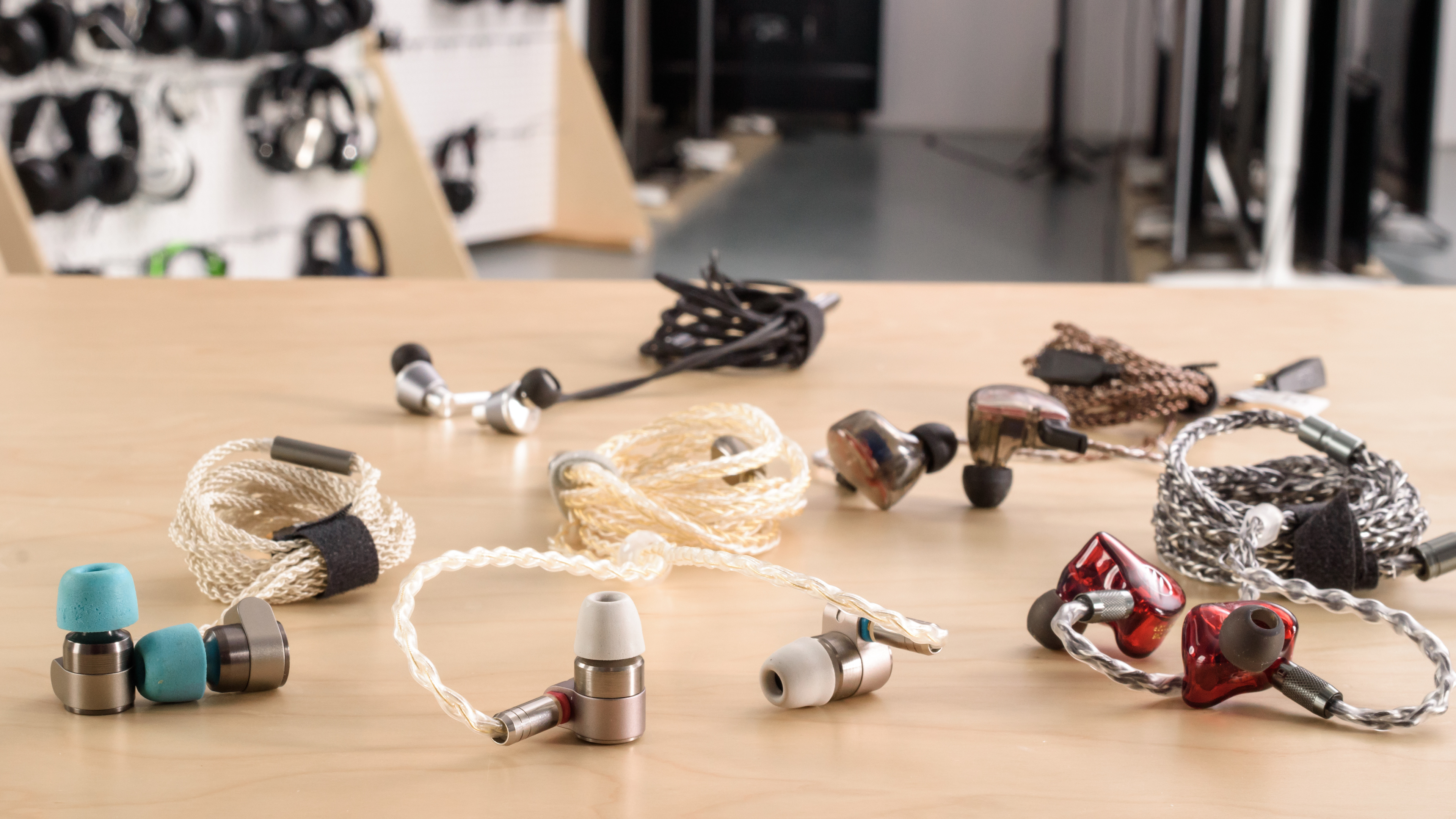
The TIN Audio T3 are decent critical listening headphones that are fairly versatile and stand out due to their great and durable build. However, their audio reproduction isn’t the best and they can be somewhat awkward to fit inside some ears.
We suggest looking at our recommendations for the best sounding wireless earbuds, the best wireless earbuds under $50, and the best earbuds and in-ears.
The TIN Audio T3 and TIN Audio T2 models are very similar with slight differences. The T3’s cable is noticeably thicker and it encourages an ear-hook fit, while the T2’s is thinner and can be worn normally, hanging down from your ears. Also, the T3 get noticeably more bass if you don’t block the ports on the T2. Additionally, they isolate a bit more ambient noise than the T2. On the other hand, the T2 are less sibilant in high treble, but that’s about it. Overall, the two models are very similar.
The 1More Triple Driver have a better sound than the TIN Audio T3 and are also more convenient as they have an in-line remote with controls and a microphone. The 1More audio quality is decent and neutral. On the other hand, the TIN are better-built headphones and feel more durable than the 1More. The TIN also isolate more ambient noise and will be better suited for commuting.
The KZ ZS-10 are better critical listening headphones than the TIN Audio T3. Their audio reproduction is more accurate, and you’ll be able to wear these headphones for a longer period of time due to their fairly comfortable design. On the other hand, if you want to listen to music during your commute, the T3 isolate more ambient noise, so they might be the better option for traveling.
The TIN Audio T3 might be a slightly better option than the BGVP DM6 for people who prefer an exciting sound. The BGVP has bass roll-off, while the TIN’s bass is slightly overemphasized. Both headphones perform similarly in pretty much every category, though. The BGVP are very comfortable if you can find a good fit, which is difficult for some. They also have a unique style and come in multiple colors, but they're slightly more expensive.
Test Results

The TIN Audio T3 are very similar to the TIN Audio T2 model in style but don’t come with flashy blue foam tips that add color to the design. However, the overall feel is the same with nice-looking metal earbuds that have a high-end design. The braided cable is transparent with gold accents, which gives a nice premium finish to the headphones.
The TIN Audio T3 aren’t the most comfortable in-ears we’ve tested. You can wear these headphones with the cable hanging down or hanging over your ears. However, they have a different fit than the previous TIN Audio T2 model. They come with a good variety of tip options, including foam tips, which most people seem to find more comfortable. Unfortunately, the nozzle is still larger than average, and some may feel it as they enter your ear canal.
These headphones don't have an in-line remote or a control scheme.
These headphones don’t come with a case to protect them when you’re on the move.
Like the TIN Audio T2, the TIN Audio T3 are very well-built headphones. They look and feel premium thanks to their metal buds which shouldn’t get damaged if accidentally dropped. Also, their cable is braided and detachable, making it easy to replace it if it gets damaged. It's also a bit thicker than the T2's cable, giving it a sturdier feel. They have a high-end build, and the replaceable parts make them even more durable.
These headphones are very stable, especially since the main difference in design between the TIN Audio T2 and TIN Audio T3 is that the orientation of the T3 buds indicates you should be wearing them with an ear-hook design. There is also a coating around the cable near the earbuds, which encourages the ear-hook fit. They shouldn’t pop out of your ears during physical activity, but you might find their cable to be in your way sometimes. Also, since the cable isn’t easily detachable, the headphones can still be yanked out of your ears if it gets stuck on something.
The TIN Audio T3 have a bass-heavy sound profile. They deliver a touch of extra thump, rumble, and boom. However, some users may find them a bit muddy. Vocals and lead instruments are accurately reproduced but are a bit veiled.
Note: Due to user feedback, we have reexamined the elevated bass response we received during our tests. We ran a pass with both the small silicone ear tips and the foam tips. The small silicone ear tips had much lower bass, while the foam tips had a significant increase in the bass range. You can see a comparison of our results here.
The frequency response consistency is excellent. If the user can achieve a proper fit and an air-tight seal using the assortment of tips that come with them, they should get consistent bass and treble delivery every time they use the headphones.
The TIN Audio T3's bass performance is satisfactory. LFE (low-frequency extension) is down to 10Hz, which is great. The response throughout the range is flat and even, but it's slightly hyped and overdone. The overemphasis in low-bass will make it slightly more thumpy, which some people may prefer. Mid-bass, responsible for the body of bass guitar and kick instruments, is well-balanced, but high-bass is hyped by more than 3dB, which will add a bit of boominess to the bass.
The TIN Audio T3's mid-range is excellent. The response is very even and flat throughout the range, which results in a well-balanced reproduction of vocals and lead instruments. However, low-mid is overemphasized by about 3dB, which is the continuation of the overemphasis in high-bass. This adds a bit of thickness to the vocals and a bit of clutter to the overall mix.
The TIN Audio T3's treble performance is good. The low-treble is underemphasized, resulting in veiled vocals and lead instruments. However, the mid-treble is a bit overemphasized, so sibilants like cymbals are bright.
The stereo imaging is excellent. Their weighted group delay is at 0.12, which is very low. The group delay graph also shows that the entire response is well below the audibility threshold. This ensures a tight bass and a transparent treble reproduction. Also, the L/R drivers of our test unit were well-matched in frequency, amplitude, and phase response. This is important for the accurate placement and localization of objects (voices, instruments, video game effects) in the stereo image. However, these results are only valid for our unit, and yours may perform differently.
The soundstage is poor. This is because creating an out-of-head and speaker-like soundstage is largely dependent on activating the resonances of the pinna (outer ear). The design of in-ears and earbuds is in such a way that fully bypasses the pinna and doesn't interact with it. Also, because these headphones have a closed-back enclosure, their soundstage won't be perceived to be as open as that of open-back earbuds like the Apple AirPods (1st generation) Truly Wireless, or the Bose SoundSport Free Truly Wireless.
These are the settings used to test these headphones, and our results are only valid with these settings.
The TIN Audio T3's isolation performance is very good. They surprisingly performed much better than the similar TIN Audio T2, especially against bass noises. In the bass range, where the rumble of airplanes and bus engines sit, they achieved more than 8dB of isolation, which is okay. In the mid-range, important for blocking out speech, they reduce outside noise by more than 22dB, which is very good. In the treble range, occupied by sharp S and T sounds and air conditioning noise, they isolate by more than 51dB, which is remarkable.
Note: We tested the headphones with the foam tips.
The leakage performance is outstanding. They don't leak, so there's no need to worry about disturbing people around with your music, even if you listen at very loud volumes. With the music at 100dB SPL, the leakage at one foot away averages at 21dB SPL and peaks at 25dB SPL, roughly as loud as a whisper and way below the noise floor of an average office.
Note: We tested the headphones with the foam tips.
These headphones don't have a microphone.
These headphones don't have a microphone.
They don't have a battery.
They don’t have a companion app to customize the sound to your liking.
The TIN Audio T3 are wired headphones and aren’t Bluetooth compatible. Since they have a wired connection, these headphones practically don’t have any latency and will be suitable for gaming and watching video content without any delay.
These headphones don’t have a dock or a base. For gaming headsets with one, you can look at the SteelSeries Arctis Pro Wireless for a dock with customization options, or look at the Astro A50 Gen 4 Wireless 2019 if you want a charging dock. However, they won’t be as portable as the TIN Audio T3.

